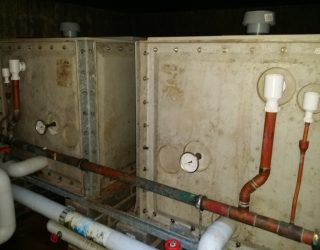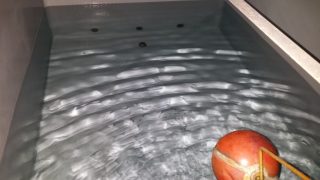When do potable water tanks need to be cleaned?

Drinking water or potable water tanks must be kept in good condition, be correctly installed and designed to ensure the water quality is maintained, and is fit for human consumption.
If you rely on tank fed water for your drinking water, then it should meet the following requirements:
- Correctly sized so stagnation does not occur, and fresh water is replenished frequently.
- Constructed of a WRAS approved material e.g. plastic (polyethylene) and have a close-fitting lid.
- Has a lid which excludes light and is tightly fitted and securely fastened to prevent birds, rodents and dust from getting into the tank.
- Has a lid vent and overflow with a screen to prevent dust, insects, birds and vermin getting into the tank.
- The tank must be insulated to keep temperature below 20 degrees.
- Inspected visually at least annually to make sure there has not been a build up of scale or sludge and the lid and screens are all securely in place.
- Cleaned and disinfected annually or sooner if microbiological monitoring indicates deterioration or if visual inspection shows sludge, scale or corrosion.
- Microbiological samples should be taken at intervals of not more than 6 months if there is a change in water quality, the tank is not adequately protected, it leaks or is corroding.
Dantek can offer advice to correctly identify potable water tanks and then monitor those tanks to ensure the water quality remains fit for human consumption. For a free consultation about your cold-water storage tanks please call 01454 417920 today.

 Clean cold water storage tank
Clean cold water storage tank